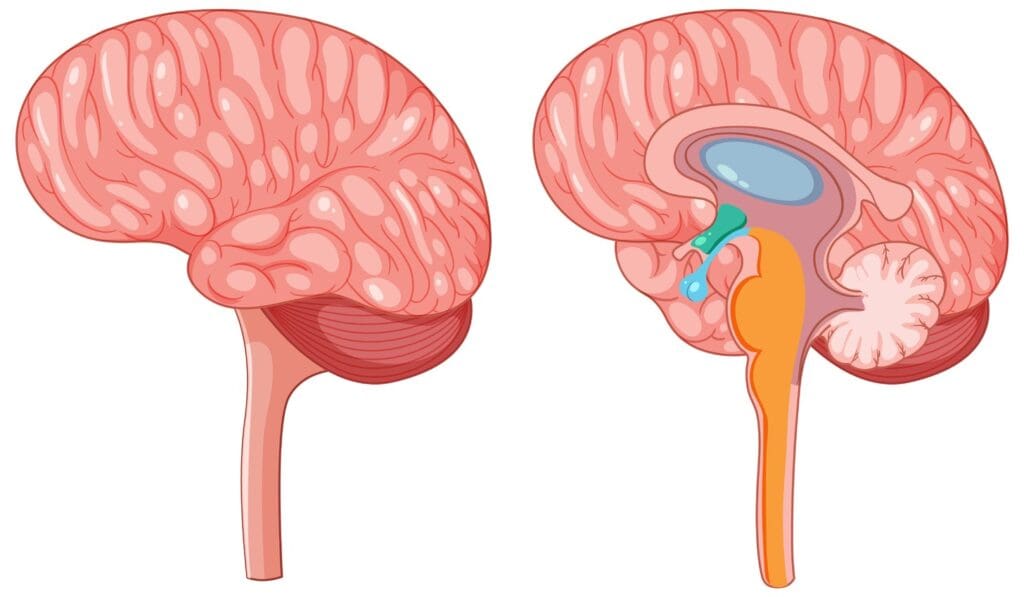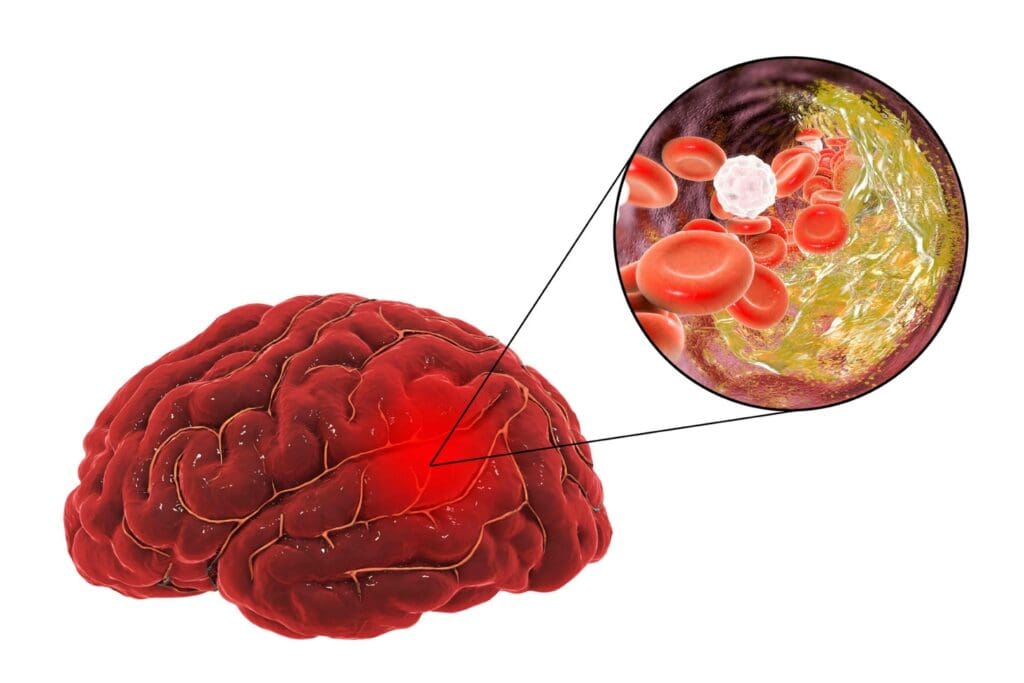Last Updated on November 26, 2025 by Bilal Hasdemir

Medical research is always moving forward, and innovative therapies are now fighting aggressive brain tumors. In 2025, big steps have been taken in targeted medications. This brings new hope to patients and their families.
We’re seeing a move towards better and more tailored treatment approaches. Research is working hard to make treatments more effective. The newest medicines and treatments aim to hit specific tumor traits. This makes care more precise and efficient.
Key Takeaways
- New approvals and ongoing research are driving advancements in brain tumor medication.
- Targeted therapies are emerging as a promising approach for aggressive brain tumors.
- Personalized treatment approaches are becoming more prevalent in brain cancer care.
- Latest medications are being developed to target specific tumor characteristics.
- Patient-centered care is at the forefront of innovative therapies followed by Liv hospital.
The Current Landscape of Brain Cancer Management
Managing brain cancer well means knowing a lot about tumors and treatments. It’s a complex mix of the tumor type, where it is, and the patient’s health.
Understanding Brain Tumor Types and Challenges
Brain tumors fall into two main groups: primary and secondary. Primary tumors start in the brain, while secondary ones come from cancer spreading elsewhere. Glioblastoma (GBM) is a very aggressive primary tumor with a tough prognosis and few treatment choices.
There are many hurdles in treating brain tumors. The blood-brain barrier makes it hard to get chemotherapy drugs in. Also, brain tumors are different, making it tough to find treatments that work for all cells.
Traditional Treatment Approaches and Their Limitations
Traditional treatments for brain cancer include surgery, radiation, and chemotherapy. While they work sometimes, they have big downsides. Surgery is hard because of where the tumor is, and radiation can harm healthy brain areas.
Chemotherapy, like for GBM, doesn’t work well because of the blood-brain barrier and tumor resistance. GBM chemotherapy drugs often can’t get into the tumor well, leading to poor results.
| Treatment Approach | Limitations |
|---|---|
| Surgery | Difficulty in accessing tumor location, risk of damaging surrounding brain tissue |
| Radiation Therapy | Damage to healthy brain tissue, risk of radiation resistance |
| Chemotherapy | Blood-brain barrier issues, tumor resistance to drugs |
It’s key to know these challenges to improve brain cancer management. Moving forward, we need to think about how new discoveries can help overcome these problems.
Breakthrough Brain Cancer Treatment Drugs in 2025
New breakthroughs in drug development are changing how we manage brain cancer. We’re seeing big steps forward in treatment development and delivery. This brings new hope to those fighting brain cancer.
Key Advancements in Drug Development Technology
The progress in brain cancer drug development is remarkable. A big leap is in creating targeted therapies. These therapies aim to hit cancer cells hard while protecting healthy brain tissue.
Technology like nanotechnology and precision medicine is also playing a big role. They help drugs reach tumors more effectively. This means treatments work better and cause fewer side effects.
| Technology | Description | Benefits |
|---|---|---|
| Nanotechnology | Uses nanoparticles to deliver drugs directly to tumor cells | Enhanced drug delivery, reduced side effects |
| Precision Medicine | Tailors treatment to the specific genetic profile of the tumor | More effective treatment, improved patient outcomes |
How New Medications Cross the Blood-Brain Barrier
One big challenge in treating brain cancer is the blood-brain barrier (BBB). It blocks many drugs from reaching tumors. New drugs are being made to get past this barrier, ensuring they reach cancer cells.
Scientists are trying different ways to get drugs through the BBB. They’re using focused ultrasound and nanoparticle carriers. These methods help drugs get into the brain and hit tumors well.
As we keep working on new treatments, our goal is to improve patient outcomes and quality of life. The progress in drug development and getting past the blood-brain barrier are key steps in fighting brain cancer.
MT-125: Enhancing Glioblastoma Response to Therapy
MT-125 is a big step forward in treating glioblastoma, making tumors more responsive to treatments. Glioblastoma is a tough brain cancer that’s hard to treat because it doesn’t react well to chemotherapy. But MT-125 is showing promise in making glioblastoma tumors more sensitive to chemotherapy drugs.
Mechanism of Action and Tumor Sensitization
MT-125 blocks non-muscle myosin IIA and IIB, proteins that help tumors survive and resist treatment. By targeting these proteins, MT-125 makes glioblastoma cells more sensitive to chemotherapy. This is key because it helps overcome the main challenge in treating glioblastoma: getting past chemotherapy resistance.
Key benefits of MT-125 include:
- Enhanced sensitivity of glioblastoma cells to chemotherapy
- Inhibition of proteins that contribute to tumor resistance
- Potential to improve patient outcomes by making existing treatments more effective
Clinical Applications for Resistant Glioblastoma
For patients with resistant glioblastoma, MT-125 offers a new treatment option. By adding MT-125 to existing chemotherapy drugs, doctors can fight the resistance that often limits treatment success.
MT-125’s clinical use is very promising, mainly for patients who’ve tried other treatments without success. As research keeps advancing, MT-125 could become a key part of glioblastoma treatment plans. This could bring new hope to both patients and doctors.
The future of glioblastoma treatment looks promising with the advent of MT-125. As we learn more about MT-125, we might find even better ways to fight this tough disease.
ONC201 (Dordaviprone): FDA-Approved Breakthrough Treatment
The FDA approval of ONC201 is a big step forward in fighting H3 K27M-mutant gliomas. This new treatment has shown great promise in trials. It brings hope to those with this tough brain cancer.
ONC201, also known as Dordaviprone, is a first-in-class therapy. It has shown to work well on some tumors in kids and adults. It targets specific pathways that help H3 K27M-mutant gliomas grow.
Effectiveness in H3 K27M-Mutant Gliomas
Studies have shown ONC201 works well on H3 K27M-mutant gliomas. This is a big deal because these tumors are hard to treat.
ONC201 has been effective in both kids and adults with these tumors. It can get into the brain, which helps it fight brain tumors.
Applications Across Age Groups
ONC201 is good for people of all ages. It works well in kids and adults with H3 K27M-mutant gliomas. This makes it a great option for many patients.
Researchers have also looked into how safe ONC201 is. Knowing about possible side effects is important. Studies have helped doctors understand how safe and well-tolerated ONC201 is.
Vorasidenib: Advanced Therapy for IDH-Mutant Astrocytoma
Vorasidenib is a big step forward in treating IDH-mutant astrocytoma. It marks a new era in brain cancer treatments. Now, targeted therapies like Vorasidenib are making a big difference for patients.
Clinical Trial Results Leading to FDA Approval
The FDA approved Vorasidenib after seeing strong results from clinical trials. These trials showed big tumor reductions and better patient outcomes. This is a major win for brain cancer treatment.
The trials were done with high standards. This made sure the results were trustworthy and showed Vorasidenib’s success.
Progression-Free Survival Improvements
Vorasidenib helps patients with IDH-mutant astrocytoma live longer without their disease getting worse. This means patients can enjoy a better quality of life.
By focusing on the specific genetic cause of the tumor, Vorasidenib offers a precision medicine approach. We’re dedicated to giving our patients the best treatments for their needs.
Safusidenib: Precision Medicine for IDH1-Mutated Glioma
Safusidenib is a big step forward in treating IDH1-mutated glioma. It uses precision medicine to target specific genetic mutations. This makes it a more personalized treatment for patients.
Genetic Targeting Mechanisms and Specificity
Safusidenib blocks the mutant IDH1 enzyme, which is key in some gliomas. This targeted approach helps shrink tumors and slow disease growth. It’s specific to mutant IDH1, which means it might cause fewer side effects than regular chemotherapy.
The genetic targeting mechanism of Safusidenib works by binding to the mutant IDH1 enzyme. This stops it from making 2-hydroxyglutarate, a harmful metabolite in IDH1-mutant gliomas.
Comparative Effectiveness Against Standard Treatments
Studies show Safusidenib is better for patients with IDH1-mutated glioma than some standard treatments. The progression-free survival is longer for those on Safusidenib. This suggests it could be a more effective option.
In tests, Safusidenib has shown good safety and effectiveness. The precision medicine approach it uses is a big step towards more tailored treatments for brain tumors.
Next-Generation Kinase Inhibitors for Brain Tumors
New kinase inhibitors are changing brain tumor treatment. They offer more targeted and effective therapies. These advancements are key in managing brain cancer.
Targeting Critical Signaling Pathways
Kinase inhibitors target key signaling pathways in brain tumors. They can stop tumor growth and improve patient results. These inhibitors are precise, leading to better treatment with fewer side effects.
Our understanding of brain tumors has led to these inhibitors. By finding specific kinases in tumors, we can make inhibitors that target them. This disrupts the pathways that tumors use to grow.
Notable Kinase Inhibitors in Clinical Practice
Several kinase inhibitors are showing promise in treating brain tumors. For example, EGFR pathway inhibitors work well in some glioblastomas. Also, PI3K/AKT/mTOR pathway inhibitors are effective in various brain cancers.
- Safusidenib is a promising inhibitor for IDH1-mutated gliomas.
- Vorasidenib is effective against IDH-mutant astrocytomas, giving hope to patients.
As research improves, we’ll see more targeted kinase inhibitors for brain tumors. The future of brain cancer treatment is bright, thanks to these new therapies.
Advanced Oral Chemotherapy Options for Brain Cancer
Oral chemotherapy has changed how we treat brain cancer. It’s now a key part of managing the disease. This is great because it makes treatment easier and less scary for patients.
Benefits for Brain Tumor Patients
Chemo tablets have made life better for brain tumor patients. They make treatment easier and help patients stick to their plans. No more hospital visits for IV chemo, which means less chance of getting sick.
Oral chemotherapy also means fewer side effects. This is because patients can take the same amount of medicine every time. For more on chemotherapy side effects, check out our resource.
Latest Formulations Improving Quality of Life
New oral chemotherapy drugs aim to make life better for brain cancer patients. They’re made to target cancer cells more and harm healthy ones less. This means fewer side effects for patients.
These new drugs have some cool features:
- They’re better absorbed by the body, making them more effective.
- They’re less toxic, which means fewer bad reactions.
- They’re easier to take, fitting into patients’ daily routines better.
As research keeps going, we’ll see even better oral chemotherapy options. These will keep making life better for brain cancer patients.
Emerging Immunotherapies Transforming Brain Cancer Treatment
The way we treat brain cancer is changing with new immunotherapies. These methods use the immune system to fight brain tumors better.
We’re entering a new era in treating brain cancer with dual-target CAR T-cell therapies. These therapies modify T-cells to attack two cancer cell targets. This could make treatments more effective and less likely to fail.
Dual-Target CAR T-Cell Therapies
Dual-target CAR T-cell therapies are a big step forward in immunotherapy for brain cancer. They target two antigens at once. This helps kill cancer cells better and stops tumors from evading treatment.
Creating these therapies is a detailed process. It involves finding the right targets, designing the CAR constructs, and making the CAR T-cells. Clinical trials are underway to check if these therapies are safe and work well for brain tumor patients.
Checkpoint Inhibitors for Brain Tumors
Checkpoint inhibitors are also promising for brain cancer treatment. They help the immune system fight cancer cells more effectively.
Checkpoint inhibitors have had mixed results in brain tumors. Scientists are looking for biomarkers to see who will benefit most from these treatments.
Researchers are also testing these inhibitors with other treatments like surgery, radiation, and chemotherapy. This combination might lead to better results for brain cancer patients.
Conclusion: The Future of Brain Cancer Treatment
Brain cancer treatment has seen big steps forward, with new drugs and therapies coming in 2025. Drugs like MT-125, ONC201, Vorasidenib, and Safusidenib are giving patients more options. These drugs help with different types of brain tumors.
The outlook for brain cancer treatment is bright, with more research and approvals on the way. We’re moving towards treatments that target specific genetic changes, like IDH1 and H3 K27M. This could lead to better results and a better life for patients.
As we keep working on new treatments, we’re getting closer to the dream of curing brain tumors with medicine. The progress we’ve made is a good sign. We’re dedicated to helping brain tumor patients, giving them hope and support in their fight against this tough disease.
FAQ
What are the latest brain cancer treatment drugs available in 2025?
In 2025, new drugs like MT-125 and ONC201 (dordaviprone) are available. Also, vorasidenib, safusidenib, and next-generation kinase inhibitors are being used. These drugs offer hope for those with aggressive brain tumors.
How do new brain cancer medications cross the blood-brain barrier?
New drug technologies now help medications get past the blood-brain barrier. This barrier was a big challenge in treating brain cancer. Now, drugs can target brain tumors more effectively.
What is MT-125 and how does it work?
MT-125 makes glioblastoma tumors more sensitive to treatment. It has shown to be effective in treating resistant glioblastoma in clinical trials.
What is ONC201 (dordaviprone) used for?
ONC201 (dordaviprone) is approved by the FDA for H3 K27M-mutant gliomas. It works well across different age groups. It’s a breakthrough in treating aggressive brain tumors.
How does vorasidenib improve treatment outcomes for IDH-mutant astrocytoma?
Vorasidenib is a new therapy for IDH-mutant astrocytoma. It has shown to improve how long patients live without their tumor getting worse. Its approval was based on successful clinical trials.
What is safusidenib and how does it target IDH1-mutated glioma?
Safusidenib targets IDH1-mutated glioma with genetic precision. It’s more specific and effective than some standard treatments.
What are next-generation kinase inhibitors used for in brain cancer treatment?
Next-generation kinase inhibitors target key pathways in brain tumors. They are being used in treatments to help patients live better.
What are the benefits of advanced oral chemotherapy options for brain cancer?
New oral chemotherapy options, like chemo tablets, improve life quality for brain tumor patients. They are more effective and easier to take.
How are emerging immunotherapies transforming brain cancer treatment?
New immunotherapies, like CAR T-cell therapies and checkpoint inhibitors, are changing brain cancer treatment. They offer better outcomes and new hope for aggressive brain tumors.
Can brain tumors be cured by medicines alone?
Medicines are key in treating brain cancer, but a cure often needs a mix of treatments. Surgery, radiation, and chemotherapy are often needed. The success of treatment depends on the tumor type and stage.
What is the future outlook for brain cancer treatment?
The future for brain cancer treatment looks bright. Ongoing research and new medications and therapies are on the horizon. Advances in precision medicine and immunotherapy will likely improve patient outcomes.
References
- ecancer. (2025). ASCO 2025: Dual-target CAR T-cell therapy slows growth of aggressive brain cancer. Retrieved from https://ecancer.org/en/news/26551-asco-2025-dual-target-car-t-cell-therapy-slows-growth-of-aggressive-brain-cancer
- Walter and Eliza Hall Institute of Medical Research (WEHI). (n.d.). World-first clinical trial reveals unprecedented insights into brain cancer treatment. Retrieved from https://www.wehi.edu.au/news/world-first-clinical-trial-reveals-unprecedented-insights-into-brain-cancer-treatment/








